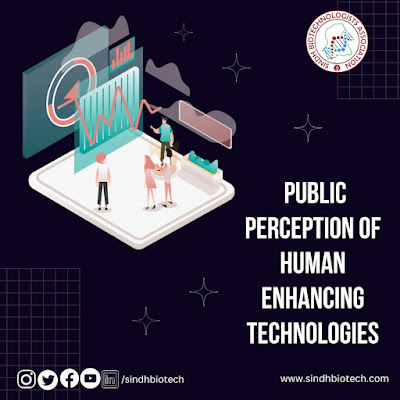Gene Therapy and the Future of Regenerative Medicine: Healing with Genes
In the realm of medical science, groundbreaking advancements continue to shape the landscape of healthcare. One such remarkable innovation is gene therapy, a cutting-edge approach that holds immense promise for revolutionizing the field of regenerative medicine. By harnessing the power of genes, scientists are striving to unlock a new era of healing, one that addresses diseases at their root cause and enables the body to regenerate and repair itself. By utilizing the power of genes, scientists are able to repair and replace damaged cells, ultimately restoring function to damaged tissues and organs. In this article, we will explore the principles of gene therapy, its current applications, and the future possibilities it holds for the field of regenerative medicine. This article delves into the realm of gene therapy and its potential to reshape the future of regenerative medicine.
The Essence of Gene Therapy
Gene therapy involves the introduction, alteration, or removal of genetic material within a person's cells to treat or prevent disease. The ultimate goal of gene therapy is to correct genetic abnormalities that lead to various disorders. Unlike conventional treatments that often focus on managing symptoms, gene therapy aims to provide a more lasting solution by rectifying the underlying genetic issues. This approach presents an exciting prospect for conditions that were previously considered incurable. One of the breakthroughs in gene therapy is the development of CRISPR-Cas9, a powerful gene-editing tool that allows precise alterations to the DNA sequence. CRISPR-Cas9 has opened new doors for personalized medicine, enabling researchers to target and modify specific genes responsible for disease manifestations. Gene therapy involves the manipulation of genes within a patient's cells to correct or replace defective genetic material. This is done by introducing healthy genes into the patient's cells, either directly or through the use of vectors such as viruses. Once the healthy genes are integrated into the patient's cells, they can produce the missing or defective protein, thereby restoring normal cellular function. There are two main types of gene therapy: somatic cell therapy and germline therapy. Somatic cell therapy targets non-reproductive cells and aims to treat specific diseases in the affected individual. Germline therapy, on the other hand, involves altering the genes in reproductive cells, which can result in permanent changes that can be passed down to future generations. Currently, germline therapy is highly controversial due to ethical and safety concerns, and most gene therapy research focuses on somatic cell therapy.
Vectors and Delivery
Central to gene therapy is the concept of vectors, which serve as vehicles to transport therapeutic genes into target cells. Viruses, specifically modified to be non-pathogenic, are commonly used as vectors due to their natural ability to infiltrate cells. These engineered viruses, or viral vectors, deliver the corrected genes to the patient's cells, allowing them to produce functional proteins that were previously missing or defective.
Advancements in Clinical Applications
In recent years, gene therapy has demonstrated remarkable success in the treatment of various genetic disorders. Conditions such as severe combined immunodeficiency (SCID), also known as "bubble boy" disease, have seen dramatic improvements. Patients who were once vulnerable to life-threatening infections are now leading healthier lives thanks to gene therapy interventions. Additionally, progress has been made in treating inherited blindness, hemophilia, and certain types of cancer using gene-based strategies.
Regenerative Medicine and Beyond
The intersection of gene therapy and regenerative medicine holds great promise. Imagine a world where damaged tissues and organs can be repaired or replaced by harnessing the body's own regenerative potential. Stem cells, which possess the ability to transform into various cell types, can be guided using gene therapy to regenerate damaged tissues, ranging from cardiac muscle to neurons. This approach could potentially revolutionize organ transplantation and mitigate the shortage of donor organs. Stem cell therapies, a subset of gene therapy, are at the forefront of regenerative medicine. Scientists can reprogram adult cells into induced pluripotent stem cells (iPSCs) and then guide these cells to develop into specific tissues or organs. This approach holds great promise for conditions like heart disease, spinal cord injuries, and degenerative disorders.
At the heart of gene therapy in regenerative medicine lies the manipulation of genes to restore normal cellular function and promote tissue regeneration. The process involves introducing functional genes into the patient’s cells using various delivery methods. One common approach is the use of viral vectors, which are genetically modified viruses that can effectively deliver the desired genes into the targeted cells. Once integrated, these genes instruct the cells to produce the missing or defective protein, ultimately leading to functional recovery.
Challenges and Ethical Considerations
Despite the tremendous potential, gene therapy faces several challenges. Delivery methods must be refined to ensure precise targeting of cells without triggering an immune response. Additionally, unforeseen long-term effects of gene manipulation require thorough investigation. Ethical dilemmas surrounding the alteration of human genes also need careful consideration to strike a balance between medical progress and potential risks.
Conclusion
The blend of gene therapy and regenerative medicine offers a glimpse into a future where diseases that were once deemed incurable can be effectively treated or even prevented. The journey from laboratory discoveries to clinical applications has been marked by significant breakthroughs, yet challenges persist. As research continues and technology advances, the day may not be far when healing with genes becomes an integral part of mainstream medical practice, transforming healthcare as we know it.
By: Noor Alam Khan
References:
Smith, L. D., & Fisher, G. (2021). Gene therapy: Progress and predictions. Gene Therapy, 28(1-2), 3-5.
Gasper, K. (2020). Gene editing and human rights: Lessons from the global governance of HIV. Bioethics, 34(3), 278-285.
Ramezani, A., & Hawley, T. S. (2020). Regenerative Medicine: A New Paradigm for the Treatment of Genetic Diseases. Current Gene Therapy, 20(5), 312



Comments
Post a Comment